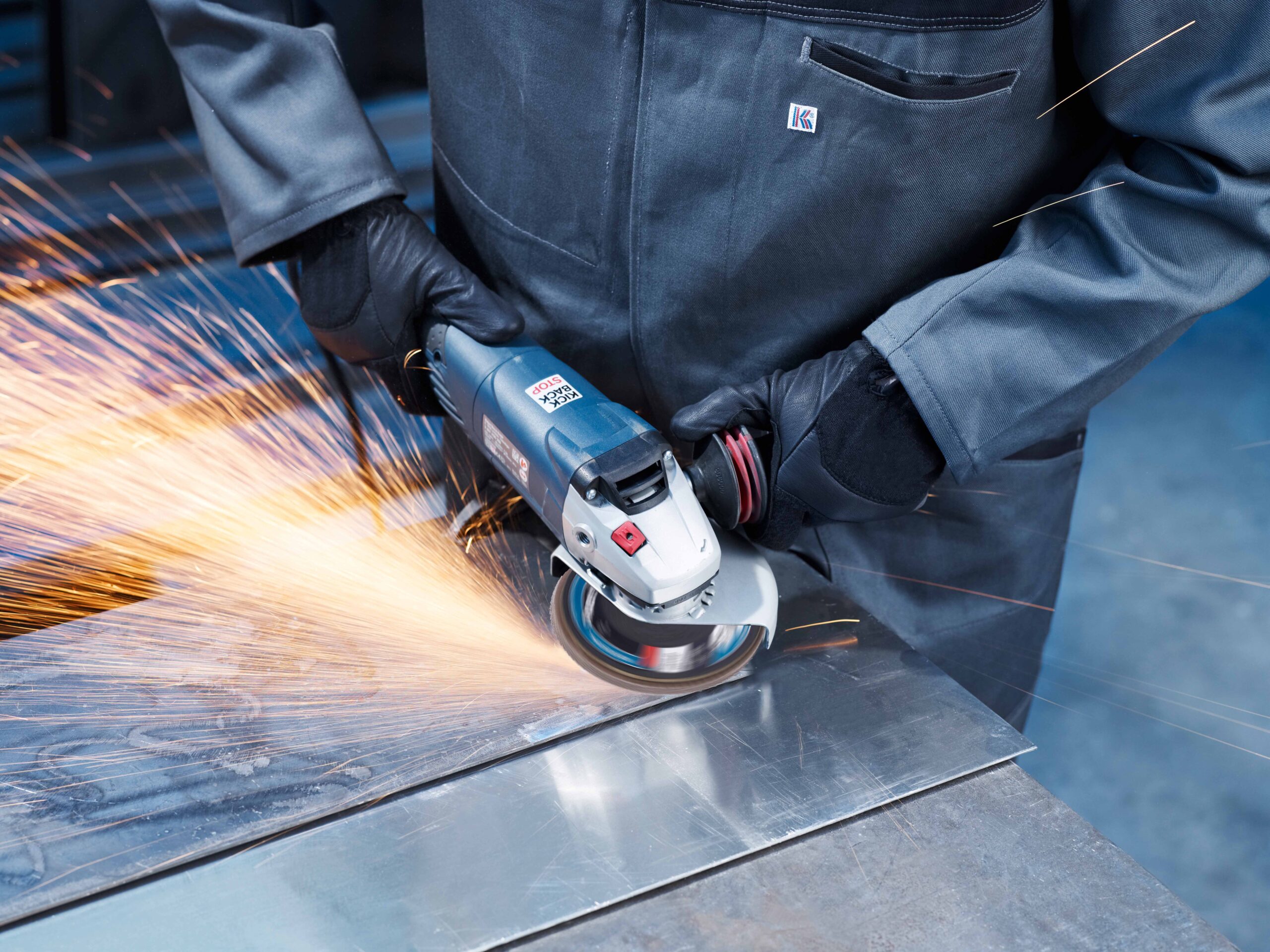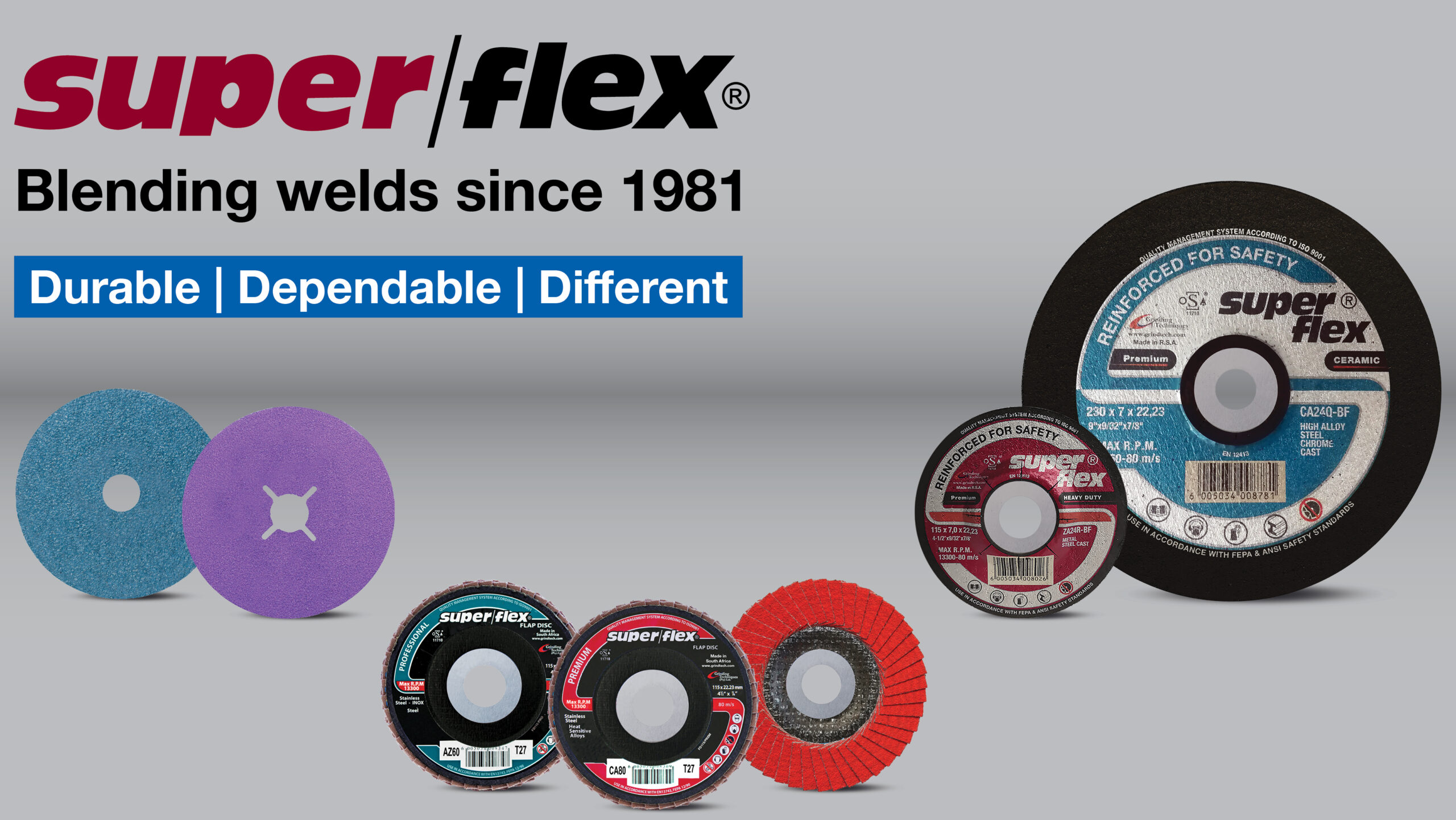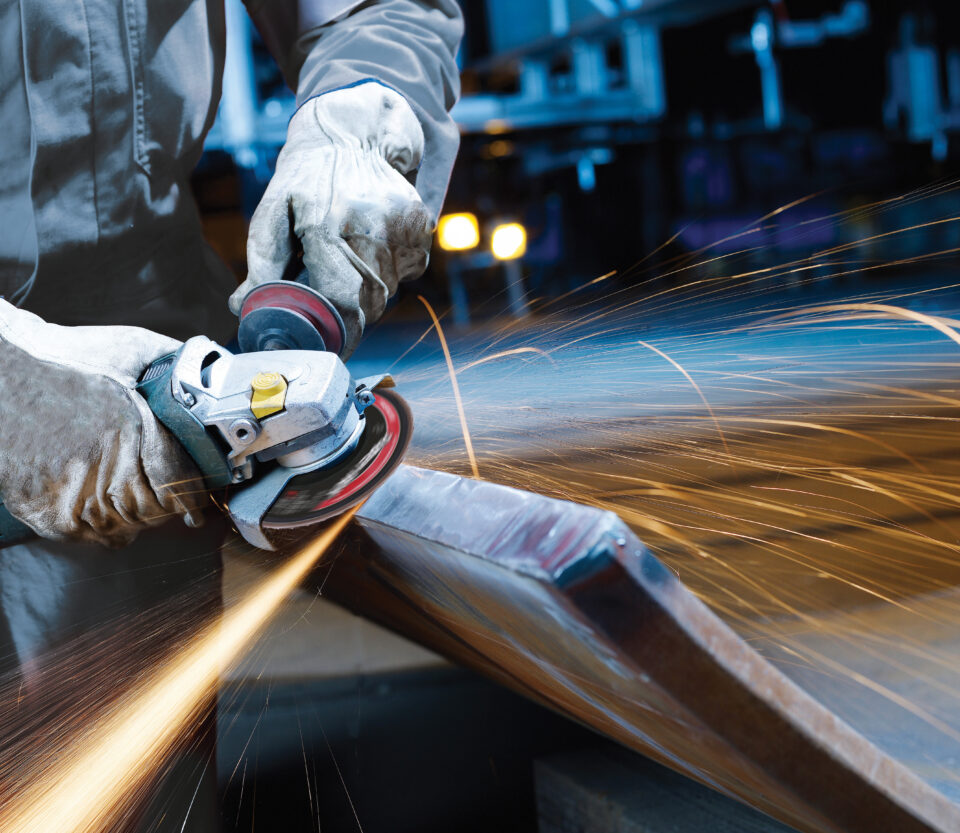Welding, an art that has been around for centuries, has come a long way since its invention. From the early days of blacksmiths hammering metal together to modern-day welding machines, it’s evident how technology has revolutionized this craft. But what about blending welds?
The Superflex abrasive range from Grinding Techniques is a versatile and affordable solution for all your welding needs. It offers a wide variety of products that include an extensive range for surface preparations that will turn anyone into an expert.
Welding is a joining process that permanently fuses materials together. A welder uses heat and pressure to join two pieces of metal or other materials together. The finished weld is known as a weldment or seam, leading onto the next process – achieving a seamless finish with our range of surface preparation abrasive products.
Blending welds is the action of combining two metal pieces together through welding and the grinding down of the weld to produce no visible seam.
Before welding can commence, the workpiece needs to be cleansed of any rust or mill scale that has formed. The requirement for this application is ideally suited to the Superflex rough cleaning, or non-woven flap disc. Once the cleaning process is completed you can determine the type of weld that is required.
There are many different welding processes, and each has its own advantages and disadvantages. The type of welding process that is best for a particular application depends on the materials to be joined, the thickness of the materials, the desired strength of the weld, the speed of the process, and the cost. Some common welding processes include MIG welding, also known as Gas Metal Arc Welding and TIG welding, known as Tungsten Inert Gas Welding. Where MIG welding is known to be a low cost yet highly productive method of welding, and mostly used on common metals like Carbon Steel and Alloys, TIG welding is a more precise form of welding and requires a bit more skill, as it results in a neater and smaller weld.

Carbon steel is almost always painted after welding, where Stainless steel usually requires a polished finish. If working on Carbon steel, not all welds need to be removed, as the seam will not always be visible. Stainless steel, like elevator panels, or handrails on the other hand requires a highly refined finish to disguise scratches.
When preparing to blend a weld, it is important to ensure that you are working with a clean, good weld, free from air bubbles or porosity. There should also be no undercut for example, edges that don’t intrude or fold into the surface of the material.
The Superflex range consists of different product options when it comes to blending weld applications. Removing the weld can quickly be accomplished with our Superflex AS30R Professional grinding disc for ease of application and minimal fuss. We recommend, a criss-cross motion to knock down the high spots when grinding, as you will remove stock quicker and easier without damaging the workpiece around the weld.
It is important to refrain from too much pressure when using a grinding disc, as you wouldn’t want to grind into the weld causing damage that could potentially weaken the weld leading to it needing to be re-worked. In some cases, a used grinding disc might offer the perfect solution, as it will be less aggressive on application. It is important to note that the final required blend will require further rework with a finer grit abrasive product after grinding.
If opting to use only one product, the Industrial and Professional range of Superflex Flap Discs with a multitude of application possibilities on various material, is ideal to remove both the weld and produce the final blend.

As a third option to blend welds, Superflex Fibre Discs can be used. A P80 grit used at a really low grinding angle of about 45 degrees, will blend the weld perfectly. Once satisfied with the finish, you can use a finer grit fibre disc, we recommend either P120 or P150, to remove the scratch marks further. Take care not to use excessive pressure during this application.
The surface is now ready for painting, perfectly prepared using the Superflex range of surface preparation products, however if a mirror finish is required, we recommend using a Superflex Non-woven Medium Flap disc followed by a Superflex Non-woven Fine Flap disc.
Whatever your requirement when it comes to abrasive products, we have you covered.
Contact us today for a bespoke solution to all your application needs.
+27 11 271 6400 | info@grindtech.com | www.grindtech.com



